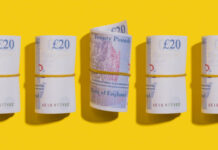Markets
The impact of this morning’s “limited” Israeli retaliatory attacks against Iran gradually waned throughout today’s trading session. Initial flows all changed course. Some examples: US yields are currently up to 3 bps lower compared to over 10 bps during (illiquid) Asian trading hours. Brent crude surged from $87/b to almost $91/b before returning to the starting position. EUR/CHF yo-yoed from 0.97 to 0.9565 and back. Today’s empty eco calendar in the EMU and the US obviously couldn’t entice. Luckily, some ECB governors hit the wires to entertain us. The way they close ranks on a 25 bps rate cut in June contrasts with the diverging views for H2 2024. ECB Kazaks says that it’s too soon to declare inflation victory. He acknowledges that the ECB does take the Fed into account, even though the central bank has its own mandate. ECB Vasle earlier this week suggested that ECB and Fed policy can diverge (short term) but that they can’t continue running async. ECB Holzmann put it into numbers yesterday. If the Fed ends up keeping policy rates stable this year, the ECB can’t go along cutting rates 3 or 4 times. ECB Vucjic joined the choir, saying that the ECB can move first but that Fed divergence would be felt. He also warned for the bumpy inflation path ahead. Base effects will cause the disinflation process to a virtual stand-still while higher energy (or commodity prices in general) have the potential to move the monthly inflation pace. On the other sides of the aisle are the likes of Maltese ECB governor Scicluna who grabbed dovish headlines by suggesting to cut at a 50 bps (!) pace should inflation move back below 2%. Good luck with that. ECB President Lagarde reiterated on the sidelines of the IMF-gathering in Washington that Frankfurt won’t pre-commit to a specific rate path. Risks to the inflation outlook are two-sided, she added. In its March projections, the ECB put forward 2.3% average inflation for this year, 2% in 2025 and 1.9% in 2026. Upside risks around this trajectory include geopolitics (and their impact on oil prices; ECB took into account average price for Brent crude <$80/b), wages (sticky 4.46% Y/Y in Q4 with Q1 2023-figure to be released mid-May) and more resilient profit margins at companies as consumption holds up given high employment levels. Downside risks include a smoother transmission mechanism and an unexpected deterioration in the economy. European rate markets gradually come to terms with the fact that follow-up rate cuts after June are not a given. You see a repricing away from 3 or 4 cuts this year to 2 or 3 tops. The front end of the curve underperforms with German yields adding up to 4 bps (2-yr) and setting a new YTD high at that tenor. The 10-yr yield rises by 1.3 bps to test resistance at 2.52%. The euro gets some reprieve from today’s rate dynamics, with the pair rebounding from 1.0610 to 1.0670.
News & Views
Belgium’s budget deficit widened significantly in 2023, the National Bank of Belgium reported in a press release today. The increase from 3.6% in 2022 to 4.4% last year pushed up the debt ratio to 105.2% of GDP (+0.9%pt vs 2022) and came despite the phasing out of temporary factors linked to the pandemic and the energy and Ukraine crises. The NBB tied the deepening deficit to a marked rise in public spending (a.o. after lifting the minimum benefit levels) as well as the structural increase in costs associated with population ageing, rising interest rates and the automatic indexation of social benefits and public sector salaries. Primary expenditure (ex. interest payments) picked up again as a result to 52.6% of GDP after two years of declines. The interest burden rose from 1.6% to 2% of GDP. The rise in the budget deficit reflected a widening of the deficit at both the federal level, by €6.8 billion to €20.6 billion, and the level of the communities and regions, by €2.0 billion to €7.1 billion. Breaking down the latter, the Flemish Community printed a €2.8 billion deficit, the Walloon region €2.2 billion and the Brussels-Capital region €1.5 billion. Each saw their debt-to-revenue ratio rise to 52%, 204% and 205% respectively.
Slovakia tapped bond markets outside the euro area for the first time in a decade. It sold a total of CHF635 million in 4-year and 10-year notes yesterday. Speaking to Bloomberg afterwards, the country’s debt chief Bytcanek said there are plans for further issuance in Swiss francs and possibly the dollar (next year) for the sake of diversification. Growing financing needs combined with rising yields on its euro-denominated bonds and the ECB offloading its bloated bond portfolio have at least as much pushed the country to explore ex-EMU markets. Slovakia is on track to record the highest budget shortfall in the EU with government estimates amounting to 6% of GDP. In absolute terms, debt repayments and projected deficits for the current and forthcoming years are estimated at some €10bn annually.













